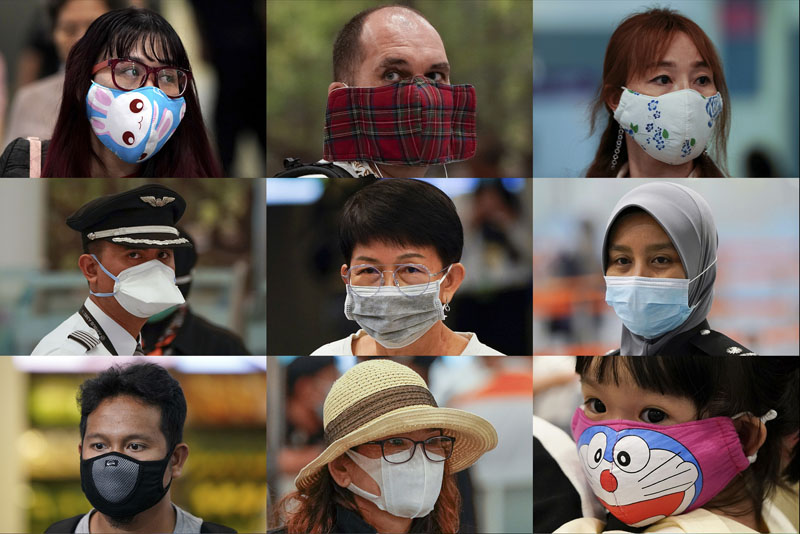Varieties of masks - what are the options?
KATHMANDU: Masks have become fundamental in the present scenario, nationally as well as globally, as coronavirus infection is still on the rise and people have had to venture out of their homes for the sake of earning their livelihood and sustaining the economy.
In Nepal, government has made the use of masks mandatory in public places to reduce the spread of coronavirus.
But as demand surged for protective masks, people in various parts of the world started making their own masks. However, according to a University of Arizona-led research, it was found that not all masks are created equal.
Recent study -- authored by Amanda Wilson who is an environmental health sciences doctoral candidate in the Department of Community, Environment and Policy in the Mel and Enid Zuckerman College of Public Health -- published in the Journal of Hospital Infection assessed the ability of a variety of non-traditional mask materials to protect a person from infection after 30 seconds and after 20 minutes of exposure in a highly contaminated environment.
When a comparison was made between wearing masks and not during the 20-minute and 30-second exposures to the virus, it was found that infection risks were reduced by 24-94 percent or by 44-99 percent depending on the mask and exposure duration. Risk reduction decreased as exposure duration increased.
"N99 masks, which are even more efficient at filtering airborne particles than N95 masks, are obviously one of the best options for blocking the virus, as they can reduce average risk by 94-99 percent for 20-minute and 30-second exposures," according to Wilson.
Other than N99, research shows that other best options include N95 and surgical masks, and even vacuum cleaner filters, which can be inserted into filter pockets in cloth masks.
The vacuum cleaner filters were found to reduce infection risk by 83 percent for a 30-second exposure and 58 percent for a 20-minute exposure. Moreover, tea towels, cotton-blend fabrics and antimicrobial pillowcases can also be used for protection.
Scarves reduced infection risk by 44 percent after 30 seconds and 24 percent after 20 minutes, whereas, cotton t-shirts are only slightly better than wearing no mask at all, the research says.
According to the author, "One big component of risk is how long you're exposed. We compared risk of infection at both 30 seconds and 20 minutes in a highly contaminated environment," she said. Other circumstances that impact infection risk are the number of people around and their distance from you, she added.
The research also notes that size of virus-transporting droplets from sneezes, coughs or speech is also an essential factor, wherein, larger and heavier droplets carrying the virus drop out of the air faster than smaller and lighter one, thereby allowing distance to help reduce exposure.
"The denser the fibres of a material, the better it is at filtering. That's why higher thread counts lead to higher efficacy. There's just more to block the virus," Wilson said. "But some masks (such as those made from silk) also have electrostatic properties, which can attract smaller particles and keep them from passing through the mask as well."
Wilson and her colleagues developed the model which included parameters such as inhalation rate, the volume of air inhaled over time, and virus concentration in the air.
According to her, proper use of masks is vital. "We were focusing on masks protecting the wearer, but masks are most important to protect others around you if you're infected."






